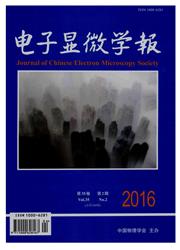

 中文摘要:
中文摘要:
显微硬度测试方法已经被广泛应用在包括金属、陶瓷及水泥等材料微观力学性能的研究中。这种方法在研究水泥等脆性材料时,通常数据离散性非常大,而现有研究通常的做法是假定显微硬度值服从正态分布,然后用剔除异常值后的平均值来表示显微硬度,这种做法是非常值得怀疑的。本文以使用或不使用内养护条件下由不同细度水泥制备的硬化水泥石为研究对象,运用统计方法检验了样品的显微硬度测试值的统计分布模型,结果发现所有样品的显微硬度数据最符合3-因素对数正态分布模型,而不是正态分布;在此基础上,定量比较了内养护对不同细度水泥石显微硬度的影响规律。由此建议在检验显微硬度统计分布模型基础上,采用平均值及其95%置信区间值统计参数来定量比较不同水泥石的显微硬度大小。
 英文摘要:
英文摘要:
Microhardness testing is a common method used to evaluate the quality and characterize the micro mechanical performances of metals,ceramics,cement and other solid materials. The test data dispersed widely when this method was used to evaluate the microhardness of cement based materials. The microhardness was assumed to be in accord with Gaussian distribution in most studies related to microhardness evaluation of cement based materials. Compared with the Gaussian distribution curves,the abnormal data were routinely discarded and the rest of the data were averaged to represent the microhardness which is suspectable. This work statistically analyzed the influence of internal curing on the microhardness of hardened cement paste prepared by cements with different fineness. The results showed that the microhardness values distribution could be well fitted by a three-parameter lognormal model instead of Gaussian distribution. And then the influence of internal curing on the microhardness of hardened cement paste was quantitatively evaluated. It is suggested that the mean with its 95% confidence interval should be used to represent the microhardness data-set of cement based materials.
 同期刊论文项目
同期刊论文项目
 同项目期刊论文
同项目期刊论文
 期刊信息
期刊信息
